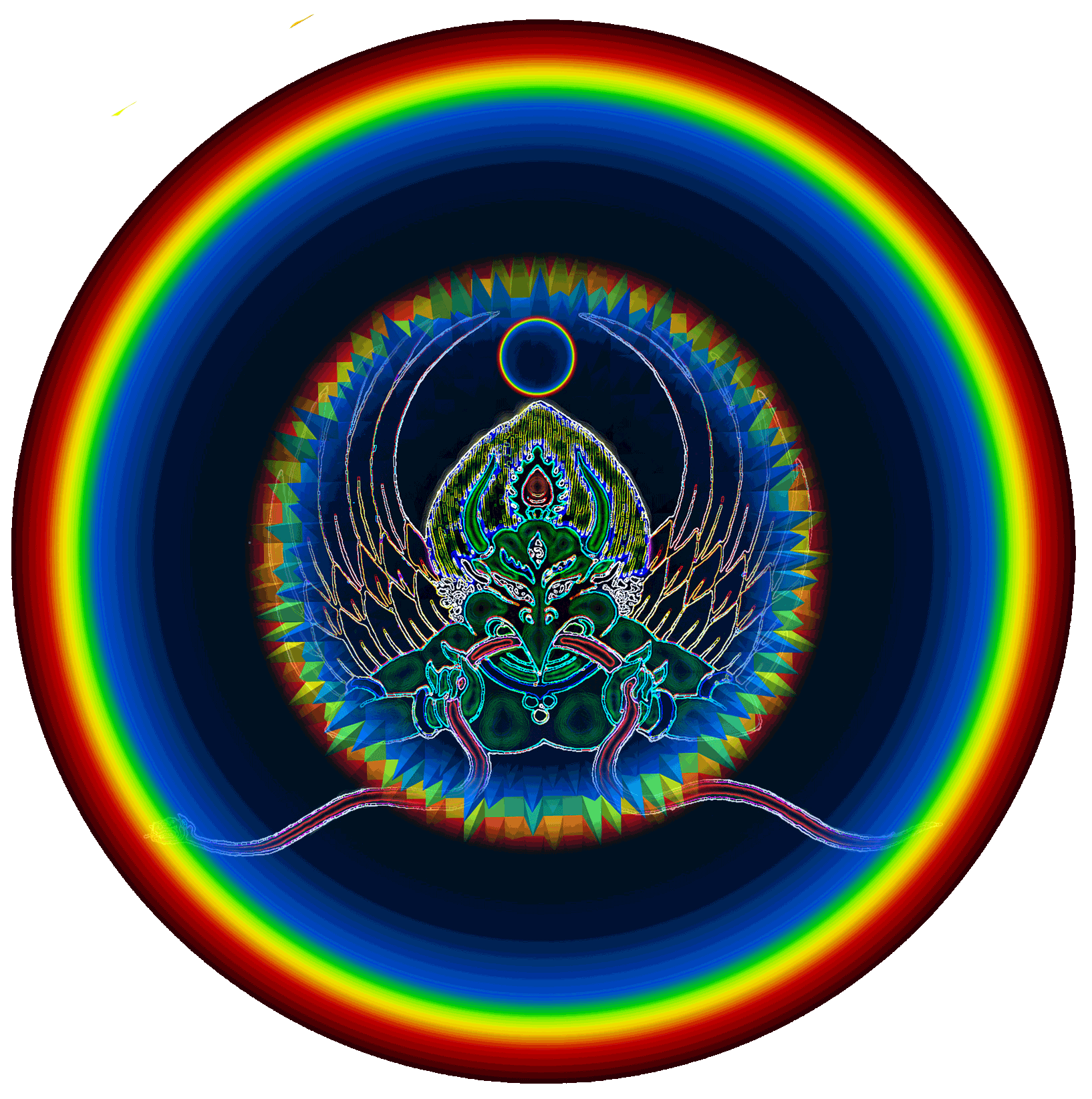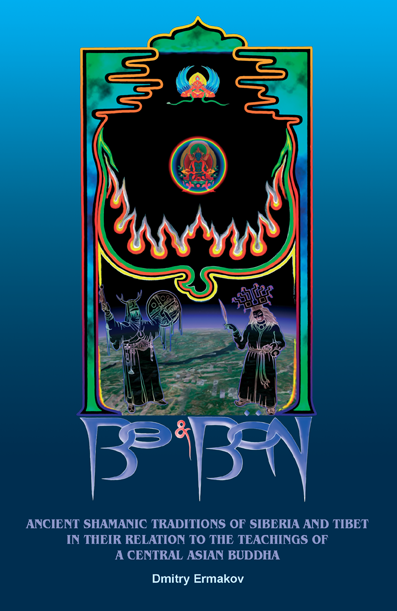The question of Indo-Iranian influence on Bön has been open for a long time now. Seeking to explain some linguistic and cultural parallels, several scholars have brought forward different theories of how and when Bön could have been influenced by the Indo-Iranian culture and religion. These theories could be broadly summed up in four points:
- Bön (Yungdrung Bön) is a stream of Central Asian Buddhism adopted from India by the Iranian speaking regions in the West (such as Kushana Empire and so on) from where it reached the Tibetan Plateau prior to the introduction of Indian Buddhism per se from the South in the 8th century AD. This Central Asian Buddhism, traceable to Buddha Shakyamuni, mixed with the native culture and religion of the Tibetan Plateau producing what is now known as Yungdrung Bön. (Snellgrove, Tucci);
- Bön is a branch of Zoroastrianism or Mithraism and Tonpa Shenrab Miwo was a priest at the court of the Persian king Cyrus the Great of the Achaemenid dynasty. (Gumilev, Kuznetsov);
- Yungdrung Bön is a plagiarized form of Indian Buddhism which emerged after the 8th century AD and any Indo-Iranian – and especially Indian – influence was acquired in this process. (This is the view of many Tibetan Buddhist scholars and some Western scholars who still follow this outdated and flimsy theory);
- Yungdrung Bön is the original, authentic Central Asian Buddhism taught by the Buddha Tonpa Shenrab Miwo who was born in 16,017 BC (according to tradition) in the Central Asian region of Tagzig (modern-day Tajikistan and surrounding Central Asian states). Tonpa Shenrab Miwo brought Yungdrung Bön teachings to the Zhang Zhung Confederation (tribal union of 18 tribes) and Tibet (at that time only U and Tsang provinces) himself, and that is the source of most Indo-Iranian linguistic and cultural traces found in Tibetan Bön. (This is the traditional Bönpo view).
In Bө and Bön the question of the bearing of Indo-Iranian culture and religion on Bön is brought up many times and through the study of rituals, myths, legend, religious texts and scholarly works it is clearly demonstrated that the ‘Indo-Iranian influence’ is actually for the most part proto-Indo-Iranian and goes back to prehistory, to the widespread international culture of Prehistoric Bön of Eurasia (a term coined by the author). Because the phenomenon of Prehistoric Bön of Eurasia was (and to some extent still is) an international one, we cannot speak of the ‘influence’ of one culture on another but rather we should explain this from the perspective of the pan-Eurasian Ur-religion. In chapters VI and XV this question is approached via a comparative study of the deities of the proto-Indo-Iranian, Vedic, Zoroastrian, Bönpo, Bө Murgel and Tibetan Buddhist pantheons such as Mithra-Ahura, Mitravaruna, Ahura Mazda and Hormuzd Yazad, Nyipangse, Hormusta Tengeri, Pehar and so on. The Gumilev-Kuznetsov theory (point 2) is critically appraised and demonstrated to be without any substance. The origins of the Gesar/Geser epic are traced to the figure of the archetypical superhero of proto-Mongol and proto-Iranian cultures and the possible location and ethnic identity of the lost kingdom of Phrom are explored.
Bө and Bön brings in new arguments which show that the ‘Central Asian Buddhism theory’ (point 1) falls short of the mark as the definite source of Indo-Iranian influence on Bön in general and, indeed, on Yungdrung Bön in particular. This is demonstrated here through thorough and critical examination of connections between Bön-Buddhism-Shamanism/Tengrism which is based on oral and written sources, cultural parallels, history and above all, on the comparative study of rituals and myths of Bön and Bө Murgel.
The latter sheds new light on and provides invaluable insights into the nature of these connections thereby dispelling long-held misconceptions and prejudices against the authenticity of Yungdrung Bön as the religion of a Buddha, albeit different from the Indian Buddha Shakyamuni (point 3).
The author argues and demonstrates that the original Bönpo view of their own tradition (point 4) cannot be dismissed out of hand and is in fact the valid one. To substantiate this he presents supporting evidence from diverse fields of study such as archaeology, history, geology, anthropology, genetics and so on. This is complimented by a presentation – based on contemporary scholarly sources and direct information from leading living Bönpo scholars such as Yongdzin Lopön Tenzin Namdak Rinpoche – on Bön history, religion, culture and possible routes by which it may have spread in and out of the ancient Zhang Zhung Confederation.
In Chapter XV the inter-connectedness of the ancient peoples (Hunnu, Syanbi, Tuyuhun’-Azha, Tokharians, Scythians and so on), cultures and religions of Eurasia is demonstrated through re-examining available data and fitting it together with the insights gained from the comparative study of Bön and Bө Murgel. This brings out an emerging picture of a global international pan-Eurasian cultural and religious phenomenon (labelled in the book as the Prehistoric Bön of Eurasia) and demonstrates that proto-Mongol, proto-Indo-Iranians and peoples of the Tibetan Plateau shared many gods as well as religious and cultural customs.

